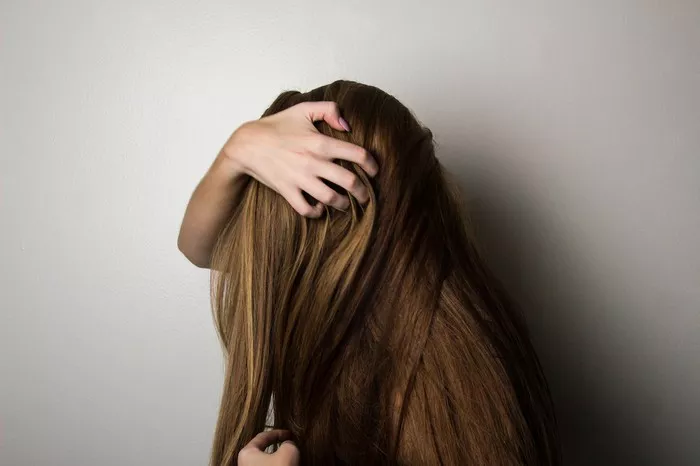Damaged hair is a common problem caused by heat styling, chemical treatments, environmental stress, and poor care habits. It can look dry, frizzy, or brittle and may break easily. The good news is that with the right products and routines, you can restore your hair’s health. This guide explains the causes of damage and provides detailed solutions to repair your hair.
What Causes Damaged Hair?
- Heat Styling: Blow dryers, straighteners, and curling irons strip moisture from hair.
- Chemical Treatments: Coloring, perming, or relaxing weakens hair structure.
- Environmental Factors: Sun, wind, and pollution weaken hair cuticles.
- Poor Diet: Lack of protein, vitamins, or minerals affects hair strength.
- Mechanical Damage: Rough brushing, tight hairstyles, or towels cause friction.
Signs of Damaged Hair
- Split ends
- Dryness or rough texture
- Frizz and lack of shine
- Breakage when combing
- Tangles easily
What Can You Use to Repair Damaged Hair?
Deep Conditioning Treatments
What They Do: Deep conditioners penetrate the hair shaft to restore moisture and softness.
Key Ingredients:
- Shea Butter: Adds moisture and reduces frizz.
- Hyaluronic Acid: Locks in hydration.
- Coconut Oil: Prevents protein loss.
How to Use:
- Apply to clean, damp hair.
- Leave for 20–30 minutes under a shower cap.
- Rinse thoroughly. Use 1–2 times weekly.
Product Examples:
- Olaplex No. 8 Bond Intense Moisture Mask
- Moroccanoil Intense Hydrating Mask
Protein Treatments
What They Do: Strengthen hair by filling gaps in the protein structure (keratin).
Key Ingredients:
- Hydrolyzed Keratin: Repairs broken bonds.
- Amino Acids: Rebuild damaged areas.
How to Use:
- Apply to damp hair for 10–15 minutes.
- Overuse can make hair stiff—limit to once every 2–4 weeks.
Product Examples:
- ApHogee Two-Step Protein Treatment
- Briogeo Don’t Despair, Repair! Deep Conditioning Mask
Natural Oils
What They Do: Oils seal moisture, add shine, and protect hair.
Best Oils:
- Argan Oil: Lightweight, repairs split ends.
- Jojoba Oil: Mimics scalp oils, balances hydration.
- Olive Oil: Deeply conditions dry hair.
How to Use:
- Warm 1–2 tablespoons and massage into hair.
- Leave overnight or for 30 minutes before washing.
Leave-In Conditioners
What They Do: Provide lightweight moisture and protect against daily damage.
Key Ingredients:
- Glycerin: Attracts moisture from the air.
- Silicones (e.g., Dimethicone): Create a protective barrier.
How to Use:
- Apply to damp hair after washing.
- Avoid the scalp to prevent greasiness.
Product Examples:
- It’s a 10 Miracle Leave-In Conditioner
- Kérastase Nutritive 8H Magic Night Serum
Heat Protectant Sprays
What They Do: Shield hair from heat damage up to 450°F (232°C).
Key Ingredients:
- Cyclopentasiloxane: Smooths hair and distributes heat.
- Vitamins E and B5: Prevent moisture loss.
How to Use:
- Spray evenly on dry or damp hair before styling.
Product Examples:
- Tresemmé Thermal Creations Heat Protectant
- CHI 44 Iron Guard Thermal Protection Spray
Avoid Heat Styling
Alternatives:
- Air-dry hair using a microfiber towel.
- Use heatless curls (e.g., braids or rollers).
- Try a blowout brush with low heat settings.
Trim Split Ends Regularly
Why: Trimming removes split ends before they travel up the hair shaft.
How Often: Every 6–8 weeks for damaged hair.
Gentle Hair Care Habits
- Use a wide-tooth comb on wet hair.
- Avoid tight ponytails or braids.
- Sleep on a silk pillowcase to reduce friction.
Healthy Diet for Hair Growth
Essential Nutrients:
- Protein: Eggs, fish, beans (strengthens hair).
- Biotin: Nuts, sweet potatoes (supports keratin).
- Omega-3s: Salmon, flaxseeds (add shine).
Supplements:
- Collagen peptides
- Multivitamins with zinc and iron
Professional Treatments
Options:
- Keratin Treatment: Smooths hair for 3–6 months.
- Olaplex No. 3: Repairs disulfide bonds at home.
- Scalp Treatments: Exfoliate and nourish the scalp.
Preventing Future Damage
- Wash hair with sulfate-free shampoo.
- Limit chemical treatments.
- Wear hats or UV-protectant sprays outdoors.
Conclusion
Repairing damaged hair requires patience and consistent care. Use deep conditioners, proteins, and natural oils to restore moisture and strength. Protect hair from heat, trim split ends, and eat a balanced diet. For severe damage, consult a stylist for professional treatments. With these steps, you’ll see healthier, shinier hair in weeks!
Related topics:
10 Effective Ways to Repair Damaged Hair
Can Protein Treatments Repair Damaged Hair
How Long Does It Take to Repair Damaged Hair?


